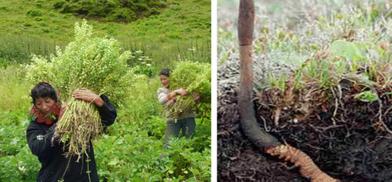Bhutan initiates inventory to record its rich medicinal plants
More than 50 years after traditional medicine was first integrated into the formal system of health care, Bhutan still lacks a database of its rich medicinal plants and herbs available in the wild

Thimphu: More than 50 years after traditional medicine was first integrated into the formal system of health care, Bhutan still lacks a database of its rich medicinal plants and herbs available in the wild. Experts do not know what medicinal plants are grown and in what quantity in the country, according to Director General Kuenga Tshering of the Department of Traditional Medicine Services (DTMS).
He said that unlike in other countries where the inventory of such resources was scientifically and periodically recorded, Bhutan did not have any such system of keeping the records. “Although we have some books on the high altitude plants, we don’t have a proper database.”
In an effort to build medicinal plants and herbs inventory, the department has initiated a resource mapping of the high-altitude medicinal species.
Using a global positioning system (GPS) the department has completed mapping Bumthang. More than 350 species of medicinal plants and herbs grow in the dzongkhag.
Kuenga Tshering said that the mapping of all the high-altitude regions would be completed by the end of the 12th Plan. “Once completed, we would classify the species into endangered and endemic groups and accordingly work to promote and protect those species.”
Traditional pharmacists say that the increasing demand for traditional medicines can lead to threats in the sustainability of raw materials.
Officials said that high altitude plants such as Byed-Rgyad-Spoe (delphinium), Ud-pal (meconopsis) and Dom-nag Dom-khris, which are commonly used to produce traditional medicines, could go extinct if not used sustainably.
Kuenga Tshering said that the department had plans to patent the medicinal plants after creating the inventory and give the ownership to respective communities where the species are found. “The idea is to use the resources sustainably and, at the same time, provide the communities an avenue to make some income.”
He said that traditional medicine in Bhutan had great potential, including the possibility of promoting medicinal tourism. “Presently, we refer our patients outside for allopathic treatments. Same thing can be done for tourists using our rich traditional medicine services.”
Kuenga Tshering said that traditional medicine was popular among Indian tourists. “If we can specialise and focus more on our therapy sessions, we have a very big opportunity. Traditional medicine could become more popular than allopathic medicine.”
For this to happen though, he said that the research division must be strengthened. More importantly, he said that allopathic and traditional medicine services in the country must complement each other.
The integration of the two – allopathic and traditional services – so far has been only to the extent that both are placed under one hospital. “There is not much of an interaction otherwise.”
A coordination committee has been formed which is studying the cross-referrals of patients.
Kuenga Tshering said that for now it was the patients’ personal choice to opt either of the two treatments with no clinical advisories from the experts. “We want a system wherein based on the coordination committees’ findings, patients will be referred to either of the services based on the effectiveness of the treatment.”
On an average, over 300,000 people avail themselves the traditional medicine services annually which includes medicine and other therapeutic facilities.
https://kuenselonline.com/inventory-to-record-the-countrys-rich-medicinal-plants-begins/









Post a Comment